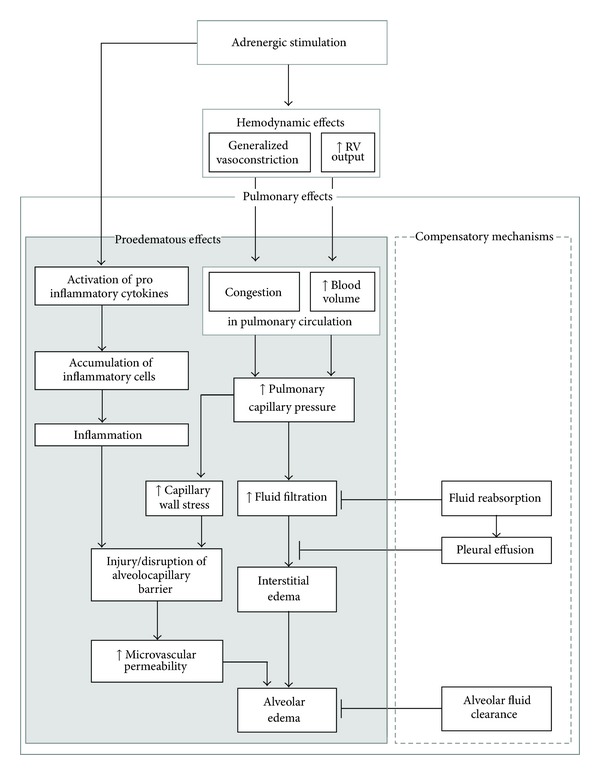Figure 1.

Pathogenic mechanisms of the contribution of adrenergic stimulation to the development of pulmonary edema. Pulmonary effects promoting development of edema are presented on the left side (grey box); protective mechanisms are depicted on the right side (white box). Hemodynamic effects (generalized vasoconstriction and increase in the RV output) result in blood overfilling and congestion in pulmonary circulation and consequently, in elevated pulmonary capillary pressure. This is the primary factor in the development of edema. High microvascular pressure causes capillary wall stress and may lead to disruption of the alveolocapillary barrier. Adrenergic stimulation also promotes proinflammatory processes. The resulting inflammation can deteriorate edema by further increasing capillary permeability. On the right-hand side, antiedematous mechanisms of the lung are shown. Reabsorption processes counteract fluid filtration. Excess fluid can be drained from the interstitium into the pleural space, thus forming pleural effusion. Alveolar fluid clearance eliminates fluid from the air space, thus preventing development of alveolar edema. RV: right ventricular, ↑: increase.
